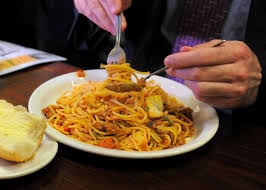
Italians traditionally refrain from breaking long pasta, such as spaghetti, before boiling it. This practice is deeply rooted in cultural customs, culinary techniques, and the pursuit of an authentic dining experience.
1. Cultural Significance
In Italy, pasta is more than just a meal; it's a symbol of tradition, family, and history. Long pasta like spaghetti holds special meaning, often tied to celebrations and gatherings where meals are enjoyed at a leisurely pace. The length of the pasta strands represents continuity and abundance. Breaking spaghetti in half before cooking, while sometimes done for convenience, changes this experience. It takes away from the traditional act of savoring the meal, which many see as an important ritual. For Italians, keeping spaghetti whole is about preserving the authenticity and enjoyment of their culinary heritage.
2. Culinary Integrity
From a practical standpoint, breaking spaghetti before cooking can impact the final dish. Spaghetti’s long strands are designed to cook evenly, ensuring a consistent texture that pairs well with the sauce. When the pasta is broken into shorter pieces, it can cook unevenly, leading to some sections being overcooked while others remain undercooked. Additionally, the long strands of spaghetti are ideal for holding onto sauce, allowing each bite to have a well-balanced flavor. Breaking the pasta can disturb this balance, potentially making the dish less enjoyable by reducing the sauce-to-pasta ratio.
3. Eating Experience
Twirling unbroken spaghetti on a fork is an essential part of enjoying the dish. This method allows the pasta to wrap around the fork neatly, with the sauce clinging between the strands, creating a perfectly balanced bite. When spaghetti is broken, it doesn’t twirl as easily, which can take away from this traditional Italian dining experience. It’s about enjoying both the texture of the pasta and the process of eating it, in a way that respects the dish’s original form.
4. Practical Cooking Tips
If your pot isn't large enough to accommodate the full length of the pasta, there's no need to break it. Instead, allow the submerged portion to soften for a minute, then gently bend the remaining strands into the boiling water. Stirring occasionally will prevent sticking and ensure even cooking.
By honoring these traditions and techniques, you not only respect Italian culinary heritage but also enhance the overall quality of your pasta dishes.




 click and follow Indiaherald WhatsApp channel
click and follow Indiaherald WhatsApp channel